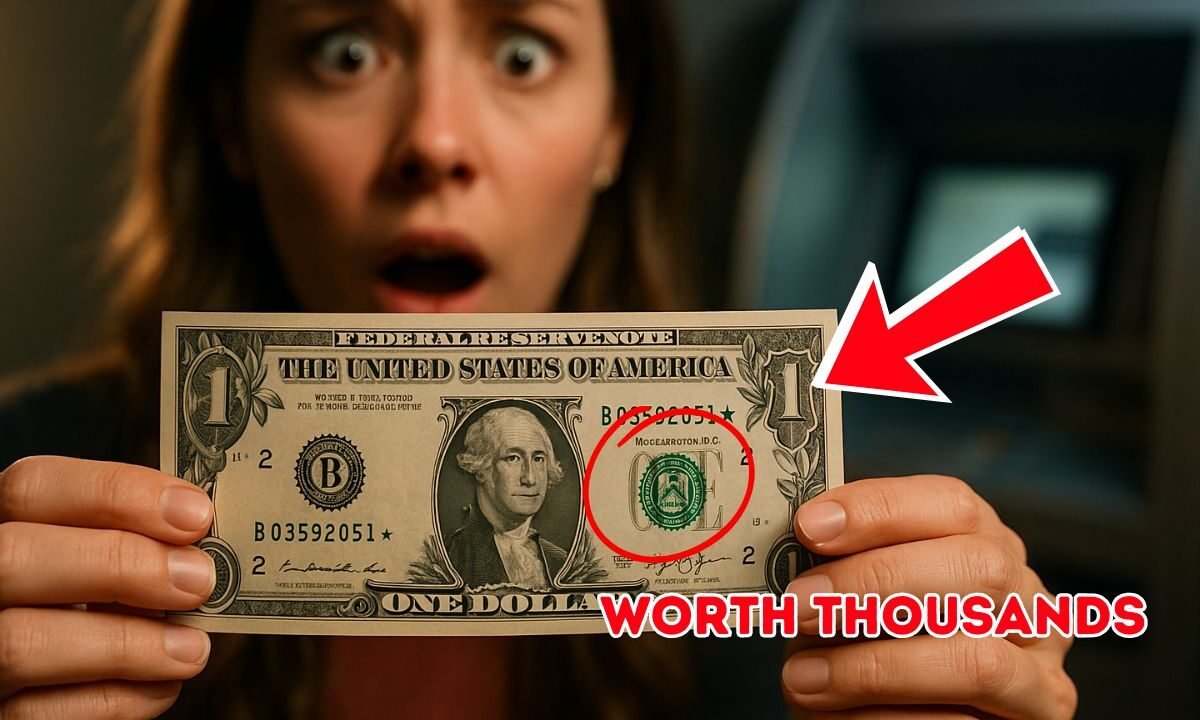Imagine going to an ATM, withdrawing cash, and finding out that one of your $1 bills could actually be worth hundreds or even thousands of dollars. This is not a fantasy—it happens because of something called star note.
These rare replacement bills, marked with a tiny star in their serial number, have become highly collectible in 2025. Let’s explore what they are, why they’re valuable, and how you can spot them.
What Are Star Notes?
Star notes are replacement bills printed by the Bureau of Engraving and Printing when a misprint or damaged bill is removed from circulation. Instead of repeating the same serial number, a star symbol (★) is added at the end.
Example:
- Regular bill: B12345678A
- Star note: B12345678★
That small symbol makes a big difference—it turns an ordinary bill into a collector’s item.
Why Are Star Notes Valuable?
Not every star note will make you rich, but some are extremely valuable depending on their features.
Key Factors That Decide Value
- Low Print Runs – Bills printed in small numbers are rare.
- Denomination & Series – $1 bills are common, but rare $5, $10, or $100 star notes can fetch much more.
- Condition – A crisp, uncirculated star note is worth more than a worn one.
- Unique Serial Numbers – Patterns like 11111111, 12345678, or palindromes (e.g., 12344321) are highly prized.
How Much Can Star Notes Be Worth?
The value depends on rarity, demand, and condition.
| Type of Star Note | Potential Value (2025) |
|---|---|
| Common $1 star note | Face value – $20 |
| Low print run $1 star note | $50 – $1,000 |
| High denomination ($5, $10, $100) | $500 – $5,000+ |
| Rare serial numbers + star | Thousands at auction |
Finding Star Notes in ATMs
Even today, people report finding star notes when withdrawing from ATMs, banks, or grocery stores. Because banks recycle cash, these bills still circulate and can appear at random. That’s what makes them exciting—you never know when you’ll spot one.
How to Spot a Star Note Quickly
Finding a star note is easy. Here’s what to check:
- Look for the Star Symbol at the end of the serial number.
- Check the Series Year since some years had smaller print runs.
- Inspect the Condition—a fresh note is more valuable.
Collectors often use online star note databases to check rarity and confirm potential value.
Why Collectors Love Them
For collectors, star notes are not just money—they’re pieces of history. Each represents a correction in the U.S. currency system. Unlike error notes (which slip through by mistake), star notes are officially printed replacements, making them rare and meaningful.
The Star Note Market in 2025
Interest in star notes has grown in 2025, especially with younger collectors using online auctions and social media. Viral stories of people finding valuable notes in change have boosted demand.
- $1 star notes from limited runs: $50 – $1,000
- Older, high-denomination star notes: Thousands of dollars at auction
- Modern star notes with fancy serials: Hundreds of dollars
Everyday Lesson
The story of star notes shows that valuable treasures can hide in plain sight. A $1 bill from an ATM might not just buy you a coffee—it could be a collectible worth hundreds or more.
Star notes prove that sometimes money is worth more than its printed value. By paying attention to small details, like a tiny star in a serial number, you could uncover a hidden gem.
Collectors value these bills as history, art, and investment. So next time you withdraw cash, keep an eye out—you might be holding more than just paper money.
FAQs
What makes a star note valuable?
A star note is valuable if it comes from a small print run, has a unique serial number, or is in mint condition.
Can I still find star notes in 2025?
Yes. People continue to find them in ATMs, banks, and everyday transactions.
Should I keep every star note I find?
It’s a smart idea to save them. Even common ones may become valuable as time passes.

